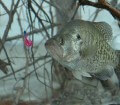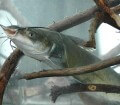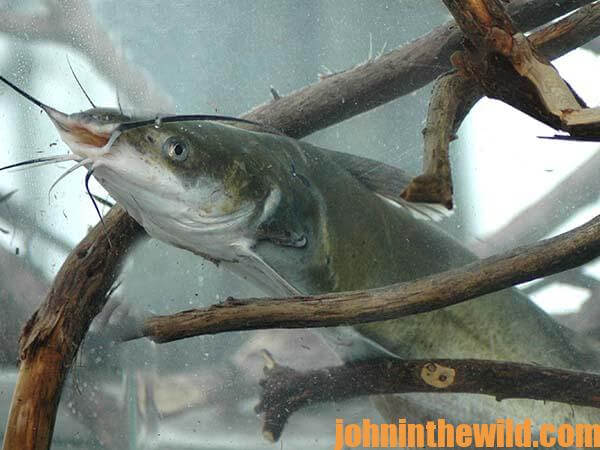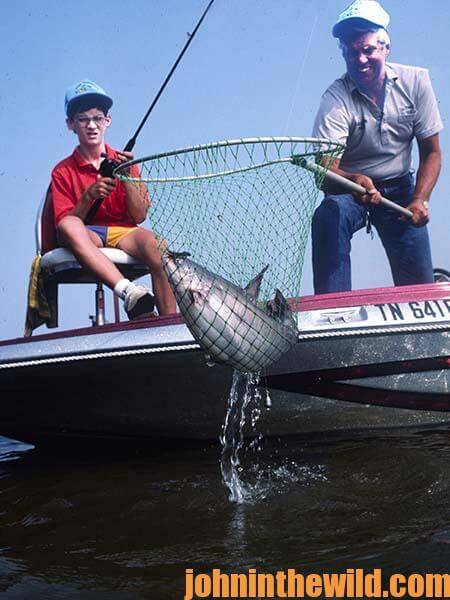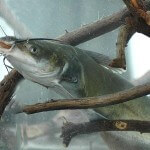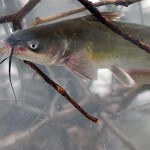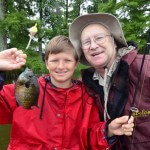John’s Note: Ole Mr. Whiskers loves dam sites, but fooling him there can be maddening – unless you get in the groove. My fishing buddy and I were catching two to four catfish per hour. But the anglers in the nondescript, flat-bottomed johnboat across from us were taking a couple of cats every 5 to 10 minutes. Frustrated, I decided right then to solve the riddle of catching tailrace cats.
Later my fishing buddy Joe Price and I pulled in to the dock after fishing for tailrace catfish.
I went to see the dock operator, Donnie Hill, told him what had happened and asked if he knew the answer to the tailrace cat riddle. Donnie was amused with my frustration and laughed as he asked, “You mean you can’t figure out that simple tactic?” “Okay, okay, I give up,” I responded. “I’ve been fooled all day, and I’m willing to beg for help.” “Well, you were fishing the right way,” Hill explained, “but in the wrong place.” “How could that be?” I questioned. “We fished in the same spots the husband and wife team did.” “Yes, but you fished those places after they left,” Hill replied. “When the Smiths moved, so had the catfish. You see, Mr. and Mrs. Smith have been fishing up here for years, and they know how to fish the grooves. Unless you understand where the grooves are, and how the surges from the turbines affect them, you can’t catch cats like the Smiths do. They usually take 100 pounds of catfish each day they fish from May through September. Using rods and reels, they often catch more than the commercial catfishermen.” “Okay, explain the grooves,” I said.
Getting in the Groove:
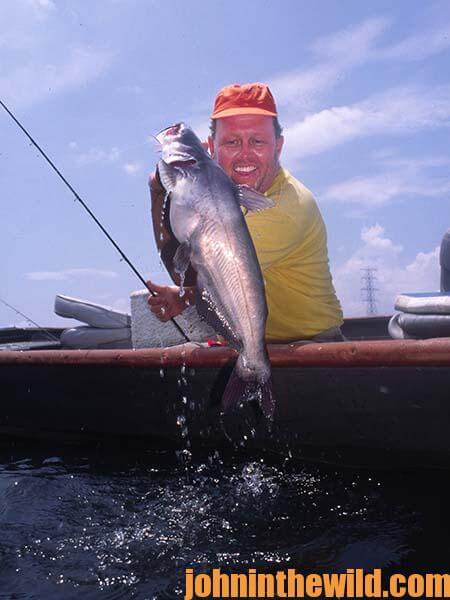 “When a turbine is discharging water,” Hill said, “the fastest flow is in the center of the discharge. As the discharge diminishes, the slower water is on the outer edge of the flow. When two turbines are running side by side or close to each other, the surface water all appears to be moving at the same speed. However, this is not what’s happening. The two currents actually collide with each other, and where they meet, the water is slower. This slow water between two fast-moving currents is called a groove. Catfish aren’t dumb. Although they will feed in the swift water, they prefer to hold and feed in the slowest part of the swift water. And the grooves provide that slack-water area.”
“When a turbine is discharging water,” Hill said, “the fastest flow is in the center of the discharge. As the discharge diminishes, the slower water is on the outer edge of the flow. When two turbines are running side by side or close to each other, the surface water all appears to be moving at the same speed. However, this is not what’s happening. The two currents actually collide with each other, and where they meet, the water is slower. This slow water between two fast-moving currents is called a groove. Catfish aren’t dumb. Although they will feed in the swift water, they prefer to hold and feed in the slowest part of the swift water. And the grooves provide that slack-water area.”
I bought that explanation. But I wanted to know why the cats moved. Hill explained, “The turbines at many dams are automatic. The flow of water through dams increases or decreases as the power requirements demand. So even though the turbines continue to run, the flow of water being released from them may change two or three times during the day. When the flow changes, the cats often move and search out more-slack water in which to feed. That’s the reason the Smiths may change fishing locations several times during the day. When the cats stop biting in one groove, the Smiths assume the flow has changed, and they move to find another groove full of cats. Because most anglers don’t know what a groove is or how it holds fish, they never solve the riddle.”
Defining the Type of Groove for Catching Catfish:
“There’s one-more element to the solution,” Hill volunteered. “One type of groove is created by converging currents. But there’s another kind that tailrace fishermen learn to find – a rock groove. To work the rock groove successfully, you need a quality depth finder. The bottom of most tailraces is rocky, not flat. And to locate the big rocks that the cats use for cover, you need a depth finder. Once you find the rocks, you have to try and remember where they’re situated.
If you’re drift fishing, allow your boat to drift over the rocks, and bump your bait over and around behind each rock. The catfish will be in the slower water directly downstream of the rock. Depending on the size of the boulder, this groove may continue for 30 or 40 yards behind the rock. The fisherman who prefers to anchor can secure his boat upstream of the rock groove, let his bait wash around the rock and then bump back down the groove until he catches a cat. Both tactics work well. One advantage to fishing the rock grooves is that because they are not visible from the surface, most sportsmen never figure out how to fish them.”
“Click here to get these books.”
About the Author
John Phillips, winner of the 2012 Homer Circle Fishing Award for outstanding fishing writer by the American Sportfishing Association (AMA) and the Professional Outdoor Media Association (POMA), the 2008 Crossbow Communicator of the year and the 2007 Legendary Communicator chosen for induction into the National Fresh Water Hall of Fame, is a freelance writer (over 6,000 magazine articles for about 100 magazines and several thousand newspaper columns published), magazine editor, photographer for print media as well as industry catalogues (over 25,000 photos published), lecturer, outdoor consultant, marketing consultant, book author and daily internet content provider with an overview of the outdoors. Click here for more information and a list of all the books available from John E. Phillips.

